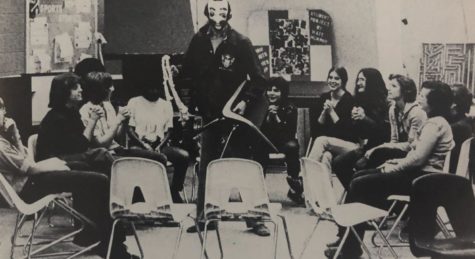Wilde Lake to Bring Back Advisory. What Can We Learn from the Past?

Next school year, Wilde Lake plans on adding an extra period to the six-period day, Advisory — 20-minutes for students to meet with teachers, attend clubs, and study.
Advisory is not new to Wilde Lake. The program, at its best, was time to be productive. At its worst, time for students to wreak havoc. But as the structure of the school evolved, Advisory fizzled out. Now, the school intends on bringing it back.
The Advisory program has a long history of successes and failures. When Wilde Lake first opened in 1971, the school took part in the nationwide Model School Program. The school participated in open space classrooms, students were taught at their own pace, and an Advisory program was introduced. The program put students in groups of 25 and assigned them one teacher as their advisor.
Advisors were given insight into their students’ performance. They received “segment slips” — notes from teachers that contained students’ grades and feedback on a student’s behavior. The advisor then would talk with their students about their grades and any concerns. At first, this system worked well.
Former English teacher Mr. Berkowitz started teaching at Wilde Lake in 1973 and saw the program rise and fall. When he came to the Lake, Advisory was still in its infancy. At the foundation of the program, a strong student-teacher bond was set in place. He says that the purpose of an advisor was always to “establish a very close relationship, one of trust and honesty, with advisees.”
“Advisory was central to a student’s success,” says Ms. Sweitzer, a Spanish teacher, former student advisee, and member of the Advisory Committee, a newly formed group planning for Advisory’s return next school year.
Mr. Berkowitz and Ms. Sweitzer have kept some of their advisor-advisee connections after graduation. “I kept in touch with my advisor until he passed away,” says Ms. Sweitzer. “He subbed for me a couple of times, and he helped me travel.”
“I have been to the wedding of some of my advisees. I have even been in their homes; that’s how close we still are,” says Mr. Berkowitz.
Eventually, the program fell apart, according to Mr. Berkowitz. As Wilde Lake tried to hold onto the fundamentals of Advisory, the self-managing aspects of the program — open space classrooms and self-paced learning — had to come to an end.
The end of open space classrooms and self-paced learning happened when the county began pushing more structured learning. Due to the increase in standardized testing and AP courses, the school’s self-managed learning didn’t fit the county’s increasingly structured school agenda, says Mr. Berkowitz.
Despite the county’s changes, Advisory still managed to stay afloat a bit longer. According to Mr. Berkowitz, the Advisors’ meeting time changed from every day to three times a week, to twice a week, to once. Advisors also stopped receiving segment slips.
Beyond the paperwork, some teachers started to feel emotionally drained from the responsibility of acting like a “second parent,” says Mr. Berkowitz.
Additionally, making advisor-advisee connections wasn’t guaranteed. “Some advisors couldn’t connect with their students and the other way around,” says Mr. Berkowitz.
As the existing staff grew frustrated, some new staff were not buying into the idea of Advisory, the once-promising program that was now imploding, so they began to bend the rules, says Mr. Berkowitz.
Over time, the 20-minute Advisory turned into a free-for-all. “It was chaos,” says Ms. Dixon, GT research teacher, and former Advisor. “Students would fight, try to sneak out of school, and neglect their homework.”
The combination of a divided staff, lack of structure, and drastic county-wide changes led to the death of the program, according to Mr. Berkowitz.
As the Advisory Committee plans for the new Advisory, Advisory veterans hope to learn from the program’s past.
For Ms. Sweitzer, the foundation of Advisory is still built on forging strong advisor-advisee bonds. “When all parties involved work together and believe in the system, long-term relationships are built such that fewer students fall through the cracks,” says Ms. Sweitzer.
The Advisory Committee is still developing what the new Advisory will look like. According to the committee, students can expect some amount of time dedicated to meet and bond with one teacher.
Mr. Berkowitz is hopeful for Advisory’s return. “Advisor groups provide the opportunity for students to have an advocate to help them navigate the high school experience, and teachers to learn more about their students and help them become more effective in the classroom.”
Your donation will support the student journalists of Wilde Lake High School. Your contribution will allow us to purchase equipment and cover our annual website hosting costs.





